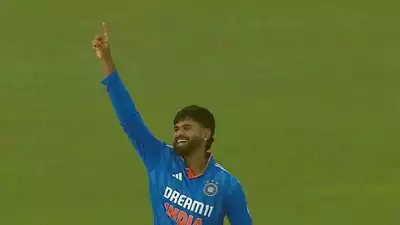Petrol prices in India stand at 109.71 ₹/L in Andhra Pradesh, 94.72 ₹/L in Delhi, 94.79 ₹/L in Gujarat, 95.25 ₹/L in Haryana, 93.25 ₹/L in Himachal Pradesh, 103.34 ₹/L in Karnataka, 105.82 ₹/L in Kerala. Previously, petrol and diesel prices underwent revision every fortnight, occurring on the 1st and 16th of each month. However, since June 2017, a new scheme has been implemented, resulting in daily revisions of petrol prices at 6 am. This change is attributed to the adoption of dynamic fuel pricing, which facilitates regular adjustments in petrol prices and diesel rates.
Cities with lowest petrol price
South Andaman
North And Middle Andaman
Nicobar
Cities with lowest diesel price
North And Middle Andaman
South Andaman
Nicobar
Cities with lowest CNG price
Jharsuguda
Sundargarh
Mumbai City
Fuel Prices in Indian Metro Cities
| City | Petrol | Diesel | CNG |
|---|---|---|---|
| Ahmedabad | 94.79 ₹/L | 90.46 ₹/L | 77.76₹/kg |
| Surat | 94.44 ₹/L | 90.13 ₹/L | 80.67₹/kg |
| Mumbai City | 103.44 ₹/L | 89.97 ₹/L | 75.00₹/kg |
| Pune | 104.55 ₹/L | 91.05 ₹/L | 89.50₹/kg |
| Chennai | 100.85 ₹/L | 92.43 ₹/L | 88.50₹/kg |
| Hyderabad | 107.41 ₹/L | 95.65 ₹/L | 92.00₹/kg |
| Kanpur Urban | 94.79 ₹/L | 87.92 ₹/L | 82.92₹/kg |
| Kolkata | 104.95 ₹/L | 91.76 ₹/L | 90.00₹/kg |
State-Wise Fuel Price
| State | Petrol | Diesel | CNG |
|---|---|---|---|
| Andhra Pradesh | 109.71 ₹/L | 97.54 ₹/L | 84.64₹/kg |
| Delhi | 94.72 ₹/L | 87.62 ₹/L | 75.09₹/kg |
| Gujarat | 94.79 ₹/L | 90.46 ₹/L | 79.02₹/kg |
| Haryana | 95.25 ₹/L | 88.08 ₹/L | 83.24₹/kg |
| Himachal Pradesh | 93.25 ₹/L | 85.64 ₹/L | 87.11₹/kg |
| Karnataka | 103.34 ₹/L | 89.39 ₹/L | 83.21₹/kg |
| Kerala | 105.82 ₹/L | 94.80 ₹/L | 86.50₹/kg |
| Madhya Pradesh | 107.52 ₹/L | 92.83 ₹/L | 87.46₹/kg |
| Maharashtra | 103.87 ₹/L | 90.42 ₹/L | 84.16₹/kg |
| Punjab | 97.55 ₹/L | 88.04 ₹/L | 88.12₹/kg |
| Rajasthan | 104.52 ₹/L | 90.03 ₹/L | 86.60₹/kg |
| Tamil Nadu | 101.70 ₹/L | 93.31 ₹/L | 81.81₹/kg |
| Telangana | 109.65 ₹/L | 97.73 ₹/L | 93.25₹/kg |
| Uttar Pradesh | 94.37 ₹/L | 87.41 ₹/L | 87.67₹/kg |
Recent Search
Top Search
Related Petrol News
Blogs
Fuel is defined as any material capable of reacting with other substances to release heat energy, which can then be harnessed for various forms of work. Technological advancements have greatly expanded the uses of fuel, allowing humans to employ it for diverse purposes such as cooking, heating, and transportation. As the demand for fuel continues to grow, humans have explored numerous methods to extract and process natural resources. This has led to the production of various types of fuel, including petrol, diesel, liquefied petroleum gas (LPG), auto LPG, and compressed natural gas (CNG).
The role of fuel in the development of a nation cannot be overstated. It is a critical driver of industrialization, economic growth, and technological progress. In developed countries, the extensive use of fuel supports a wide range of activities, from powering factories and vehicles to generating electricity and providing domestic energy needs. The reliance on fuel in these nations highlights its importance in maintaining the infrastructure and lifestyle that characterizes advanced economies. Thus, ensuring a stable and efficient supply of fuel is a priority for sustaining development and enhancing the quality of life worldwide.
Processed fuel is essential for performing daily activities. It is a well-known fact that India primarily imports crude oil from abroad. Consequently, domestic fuel prices are largely dependent on global crude rates. Any fluctuations in these global crude prices directly affect the cost of fuel in India, impacting everything from transportation and manufacturing to household energy consumption. The dependency on international markets for crude oil underscores the importance of monitoring global price trends to anticipate and manage the economic impact on the country's fuel prices.
An ideal fuel possesses the following characteristics:
- Convenient Ignition Temperature: It should ignite easily at a manageable temperature.
- High Calorific Value: It should release a large amount of energy per unit when burned
- Controlled Combustion Rate: Its rate of combustion should be easily manageable to ensure efficiency and safety.
- Environmental Safety: It should burn cleanly without causing atmospheric pollution.
- Affordability: It should be available at a reasonable price, making it economically accessible.
- Abundant Availability: It should be readily available in large quantities to meet demand.



















